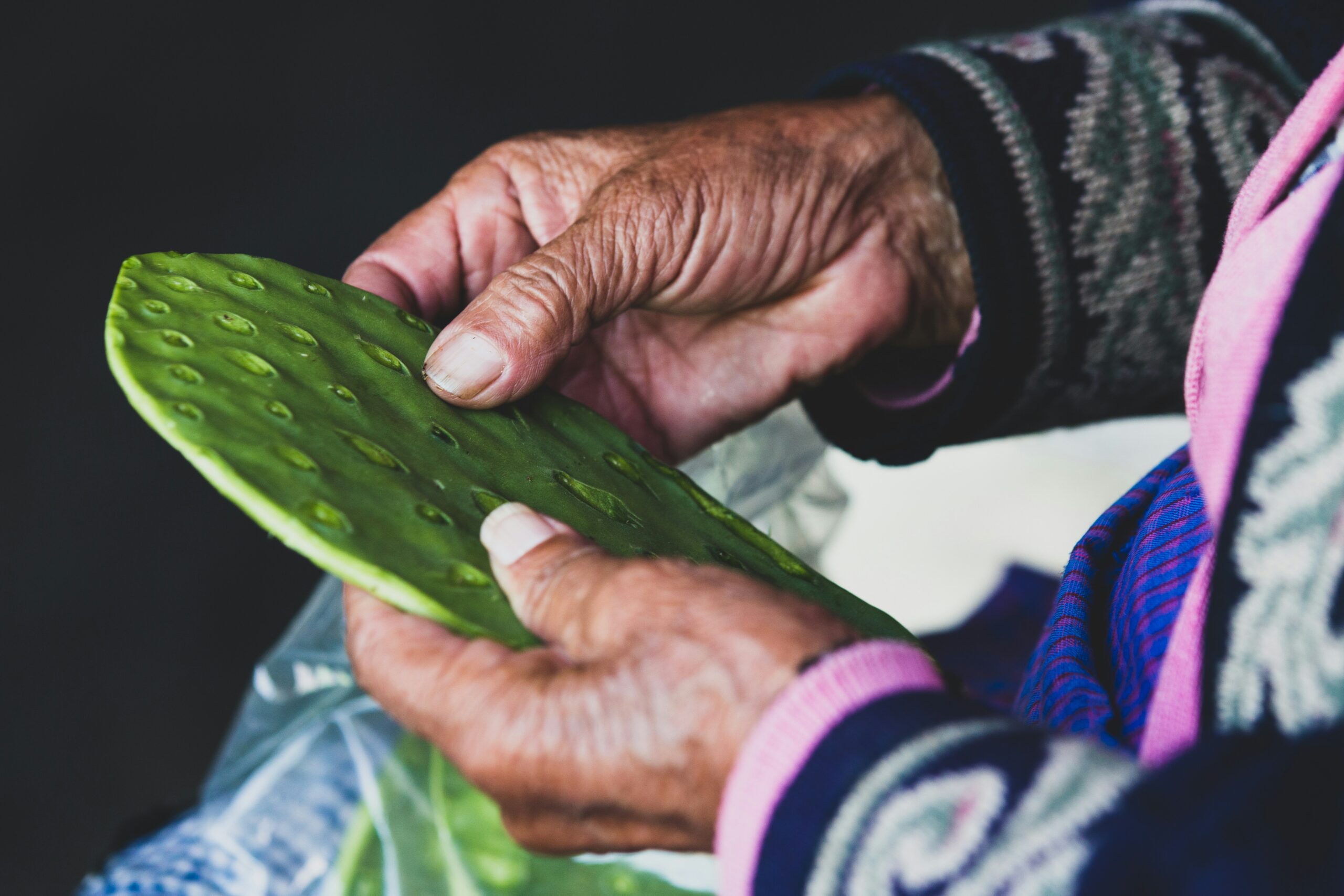Have you ever wondered how you can use natural plants to combat soil erosion? One key player in this environmental challenge is the Nopal cactus, also known as prickly pear. This resilient plant isn’t just a nutrient-rich delicacy; it’s also a powerful tool in erosion control. In this article, you’ll discover how to use Nopal cactus in erosion control, maximizing its benefits and contributing to a more sustainable environment.

What is Nopal Cactus?
Nopal cactus is a type of cactus native to arid and semi-arid regions. It’s commonly found in the Americas and has been used for centuries in both culinary and medicinal applications. These cacti belong to the genus Opuntia and are characterized by their flat, paddle-shaped buds called cladodes.
Characteristics of Nopal Cactus
The Nopal cactus stands out for its hardiness and adaptability. Its ability to thrive in harsh conditions makes it an excellent plant for combating soil erosion. Here’s more about the unique characteristics of Nopal cactus:
| Characteristic | Details |
|---|---|
| Scientific Name | Opuntia species |
| Common Name | Prickly pear, Nopal |
| Origin | Americas (predominantly Mexico) |
| Climate | Arid to semi-arid |
| Soil Type | Sandy, rocky, well-draining soils |
| Growth Form | Sprawling, with flat, paddle-like pads |
| Resilience | Drought-tolerant, withstands poor soils |
Importance of Erosion Control
Before diving into the practical steps, it’s essential to understand why erosion control is so vital. Soil erosion is the gradual removal of the topsoil layer due to water, wind, or human activity. This process can lead to significant environmental and economic issues.
Environmental Impact
Soil erosion can lead to loss of fertile land, destruction of habitat, and reduction of water quality. Here’s how:
- Loss of Fertile Land: Erosion strips away nutrient-rich topsoil, making the land less productive.
- Destruction of Habitat: Animals and plants that rely on stable land for habitats may suffer.
- Reduction of Water Quality: Eroded soil can end up in waterways, leading to sedimentation and pollution.
Economic Consequences
Economically, the impact of soil erosion is profound. Agricultural productivity declines, leading to higher food costs and loss of arable land. It also prompts increased expenditure on soil restoration and erosion countermeasures.
How Nopal Cactus Assists in Erosion Control
Nopal cactus can be a frontline soldier in the battle against soil erosion due to its varied beneficial properties.
Root Structure
The root system of the Nopal cactus is extensive and deep, which helps to anchor the soil. These roots can stabilize the topsoil, reducing the risk of erosion. This is particularly useful in arid regions where other plants might struggle to establish themselves.
Water Retention
Nopal cactus has an exceptional ability to retain water. This property not only helps the cactus survive in dry climates but also improves the soil’s water retention capacity. Better water retention enhances soil stability, reducing the likelihood of erosion.
Soil Improvement
The organic matter from decomposing Nopal pads and other parts improves the soil quality over time. This organic matter adds nutrients, improving soil fertility and structure. Consequently, healthier soil is less prone to erosion.
Steps to Using Nopal Cactus in Erosion Control
Now, let’s break down the steps to effectively use Nopal cactus for erosion control.
Selecting the Right Species
Different species of Nopal cactus vary in their adaptability and growth patterns. When choosing a species, consider the local climate, soil conditions, and specific erosion issues.
| Species | Climate Tolerance | Soil Preference |
|---|---|---|
| Opuntia ficus-indica | Arid, semi-arid | Well-drained, sandy |
| Opuntia robusta | Semi-arid, temperate | Rocky, well-drained |
Site Preparation
Before planting Nopal cactus, proper site preparation is crucial. Follow these steps:
- Soil Testing: Analyze the soil to identify its composition. Amend it if needed to ensure it is well-draining.
- Clearing the Area: Remove any debris, weeds, or existing plants that might compete with the cactus.
Planting the Cactus
Planting Nopal cactus involves a few critical steps:
- Cutting Preparation: Obtain Nopal cuttings from a healthy plant. Allow the cuttings to dry for several days to form a callus, preventing rot when planted.
- Planting Depth: Plant the cuttings about 2 inches deep in the soil.
- Spacing: Maintain proper spacing between each plant, typically around 3 to 5 feet, depending on the species and the area of erosion control.
Irrigation and Maintenance
Initially, the Nopal cactus requires regular watering until it establishes a root system. Once established, it needs minimal irrigation. Regularly clear any weeds and monitor for pests or diseases.

Advantages of Using Nopal Cactus
Incorporating Nopal cactus in erosion control brings several advantages:
Cost-effective
Nopal cactus requires low maintenance and minimal water once established. This makes it an economically viable solution for erosion control compared to other methods that need constant monitoring and input.
Eco-friendly
Unlike synthetic erosion control methods, using Nopal cactus is a natural and sustainable option. It promotes biodiversity and contributes to the overall health of the ecosystem.
Resilience to Harsh Conditions
Due to its adaptability to poor soil and extreme weather, Nopal cactus continues to thrive where other plants might fail. This resilience ensures long-term erosion control with less effort.
Challenges and Solutions
While Nopal cactus is effective, it does come with its challenges. Here’s how to address them:
Pest Control
Nopal cactus can attract pests like the cochineal insect, which can damage the plant. Regular inspection and organic pest control methods, such as neem oil, can help mitigate this issue.
Overgrowth
In some regions, Nopal cactus can become invasive. Regular trimming and monitoring can keep its growth in check while ensuring it doesn’t encroach on unintended areas.
Moisture Management
In very dry climates, maintaining adequate moisture levels for young plants can be challenging. Supplemental watering during the initial growth phase and mulch application to retain moisture can alleviate this.

Case Studies of Successful Nopal Cactus Implementation
Let’s look at some real-world examples where Nopal cactus has been successfully used in erosion control:
Mexico
In Mexico, farmers have long used Nopal cactus to stabilize slopes and prevent soil erosion. The extensive root system has helped maintain soil integrity, promoting sustainable agriculture.
United States
In the Southwestern United States, Nopal cactus is employed in rehabilitating degraded lands. It not only controls erosion but also provides a habitat for local wildlife.
Australia
Facing soil degradation issues, certain areas in Australia have adopted Nopal cactus planting. The resilient cactus has improved soil retention and contributed to the reestablishment of native flora.
Practical Tips for Maximizing Nopal Cactus Benefits
Here are some practical tips to ensure you get the most out of using Nopal cactus for erosion control:
Companion Planting
Combine Nopal cactus with other native plants that complement its growth. This approach enhances biodiversity and strengthens the overall ecosystem.
Regular Monitoring
Conduct periodic inspections to ensure the cactus is healthy and effective in erosion control. Identify and address any issues early on to maintain plant health and effectiveness.
Soil Amendments
Enhance soil quality periodically by adding organic matter or specific nutrients. This keeps the soil fertile and capable of supporting the cactus over the long term.
Community Involvement
Engage local communities in planting and maintaining Nopal cactus. This approach not only spreads awareness about sustainable practices but also ensures collective effort in combating soil erosion.

Conclusion
Using Nopal cactus in erosion control is a sustainable, cost-effective, and eco-friendly approach. Its robust root structure, water retention capacity, and adaptability make it an ideal candidate for stabilizing soil and preventing erosion. By selecting the right species, preparing the site adequately, and maintaining the plants, you can harness the full potential of Nopal cactus. Despite some challenges, the long-term benefits make it a valuable tool in erosion control, with successful implementations seen across various regions worldwide.
By understanding and applying these methods, you can contribute to a more sustainable environment, combat soil erosion effectively, and promote biodiversity. The humble Nopal cactus proves that even the most unassuming plants can play a significant role in environmental conservation.

